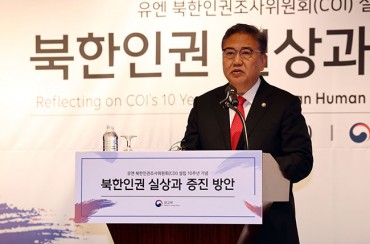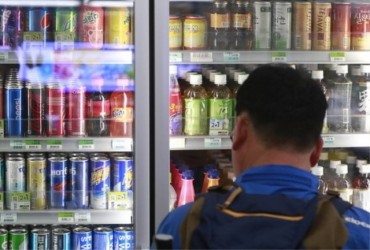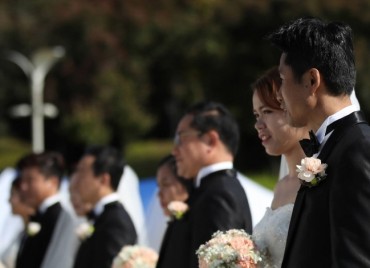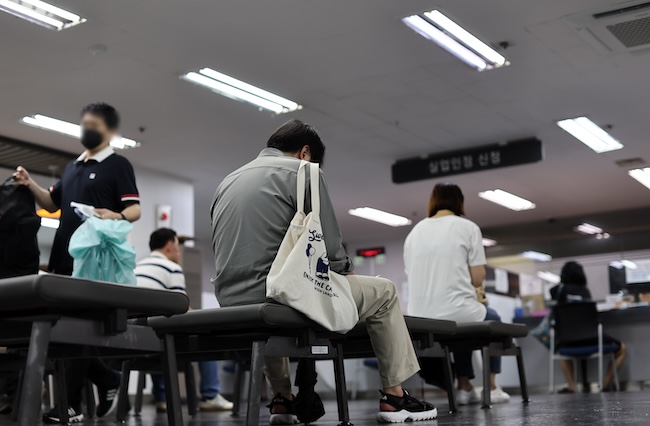
The number of young adults classified as economically inactive has increased for the first time in nine months. (Image courtesy of Yonhap)
SEJONG, Jun. 24 (Korea Bizwire) – In a concerning trend for South Korea’s labor market, the number of young adults classified as economically inactive — neither employed nor seeking work — has increased for the first time in nine months, despite government initiatives to integrate them into the workforce.
According to data from Statistics Korea, the number of so-called “resting” youth aged 15-29 rose by 13,000 in May compared to last year, reaching 398,000. This figure represents the second-highest level since record-keeping began in 2003, surpassed only by the peak of 462,000 in 2020.
The proportion of “resting” youth among the total youth population jumped from 4.6% to 4.9% year-over-year, a significant increase given the overall decline in the youth population. This category includes individuals who are neither employed nor unemployed but respond that they are “just resting” in labor force surveys, despite having no major illnesses or disabilities.
The number of “resting” youth had been decreasing year-on-year since September of last year, but the rate of decrease has been shrinking noticeably since March. The decline narrowed from 56,000 in January to 5,000 in March and 14,000 in April, before turning to an increase in May.
Parallel to this trend, the number of “discouraged job seekers” — those who have given up looking for work due to a perceived lack of suitable opportunities — has also risen. From January to May 2024, the average monthly number of discouraged youth job seekers was 120,179, an increase of about 11,000 compared to the same period last year. Young adults now account for 31.1% of all discouraged job seekers in South Korea.
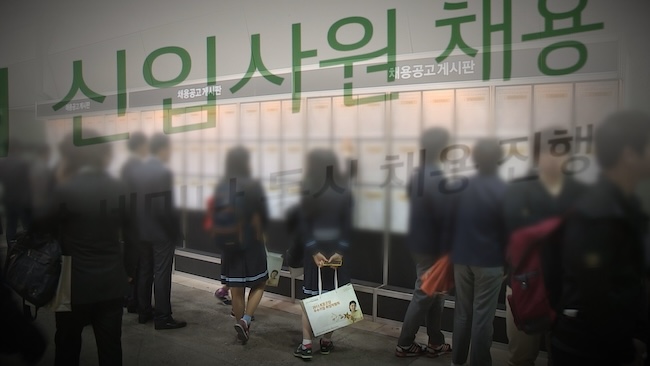
Young adults now account for 31.1% of all discouraged job seekers in South Korea. (Image courtesy of Yonhap)
The persistence of high numbers of “resting” and discouraged youth, despite government efforts, points to deeper structural issues in the job market. Last November, the government unveiled a plan to promote youth entry into the labor market, including expanded internship programs, subsidies for national technical qualification exam fees, and group counseling services for “resting” youth.
However, experts argue that these measures may have limited impact without a corresponding increase in high-quality job opportunities. The recent export-led economic recovery, primarily driven by the semiconductor industry, has not significantly boosted employment due to the industry’s low job creation effect.
In May, the number of regular employees among the youth decreased by 195,000 compared to last year, marking the largest drop since data collection began in 2014. This decline in regular employment has continued for two consecutive years, with the rate of decrease significantly expanding from 10,000 in May of last year.
Kim Kwang-seok, head of economic research at the Institute for Korean Economy and Industry, explained, “The decrease in quality jobs desired by young people, due to investment contraction following high interest rates post-pandemic, has led to a decline in regular employment and a loss of job-seeking motivation among youth.”
The situation is further exacerbated by the growing trend of large companies preferring experienced hires over entry-level positions, making it increasingly difficult for young people to enter the job market.
While the government maintains that overall youth employment and unemployment rates remain favorable, it has been acknowledged that multiple factors, including base effects from post-pandemic employment improvements and the inclusion of holidays in the May survey period, may have influenced the recent increase in “resting” and discouraged youth.
A government official stated, “The absolute levels of youth employment and unemployment rates are still good. We need to monitor the situation for the time being to accurately grasp the exact trend.”
M. H. Lee (mhlee@koreabizwire.com)



